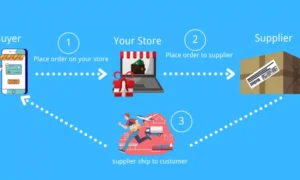Sarah thought she was being careful. She used different passwords for her important accounts, avoided suspicious links, and never shared personal information with strangers online. But one morning in March, she woke up to find her entire digital life turned upside down.
Her email was sending spam to her contacts. Her bank account showed unauthorized transactions. Worse yet, someone had used her stolen identity to apply for credit cards and loans. Sarah had become another casualty in the escalating war over data security.
The Reality Behind the Statistics
Every day, cybercriminals launch over 4,000 cyberattacks. That’s one attack every 22 seconds. But these aren’t just numbers on a security report—they represent real people like Sarah, whose lives get derailed by data breaches and identity theft.
Take Marcus, a freelance graphic designer from Portland. He stored all his client work on cloud services, thinking they were safe. When hackers breached his account, they didn’t just steal his data—they held it hostage. The ransom? $5,000 he didn’t have. Marcus lost six months of work and three major clients who couldn’t wait for their projects to be recovered.
Or consider Elena, a college student who used the same password across multiple platforms. One compromised gaming account led to her social media being hacked, embarrassing photos being posted, and her scholarship application being sabotaged. Her academic future hung in the balance because of poor password hygiene.
The Web2 Vulnerability Crisis
Our current internet infrastructure, often called Web2, centralizes enormous amounts of personal data in the hands of tech giants and service providers. This creates what security experts call “honeypot targets”—massive databases that attract cybercriminals like flies to honey.
Facebook’s data breach affected 533 million users. Yahoo lost data from all 3 billion of its accounts. Equifax exposed personal information of 147 million Americans. These aren’t isolated incidents—they’re symptoms of a fundamentally flawed system where your most sensitive information sits in centralized servers, protected by someone else’s security measures.
David Chen learned this the hard way. As a small business owner, he relied on various cloud services to manage customer data, inventory, and financial records. When the payment processor he used suffered a breach, David’s customers’ credit card information was compromised. Even though the breach wasn’t his fault, angry customers blamed his business. He lost 40% of his client base within six months.
The Hidden Vulnerabilities in Everyday Life
Most people underestimate how much of their digital footprint is actually vulnerable. Your smart TV might be recording conversations. Your fitness tracker knows your daily routines. Your phone’s location services create a detailed map of everywhere you go.
Jennifer discovered this when her ex-boyfriend began showing up at places she visited. She had no idea that a shared streaming account contained location data from her phone, or that he could access her cloud-stored photos, which included geolocation information. What seemed like convenient technology integration became a tool for stalking and harassment.
The interconnected nature of modern digital services means that one compromised account can cascade into multiple breaches. Your email gets hacked, leading to password resets on your banking, shopping, and social media accounts. Your phone number gets spoofed, bypassing two-factor authentication. Your cloud storage gets accessed, revealing documents with sensitive information.
Beyond Individual Impact: The Ripple Effects
Data breaches don’t just affect individuals—they ripple through families, communities, and entire economic systems. When criminals steal healthcare data, insurance fraud increases, driving up premiums for everyone. When they compromise business systems, supply chains get disrupted, affecting jobs and local economies.
Consider the case of Thomas, a factory worker whose employer suffered a ransomware attack. The company couldn’t access payroll systems for three weeks. Thomas couldn’t pay his mortgage, his daughter’s tuition payment was late, and his credit score dropped when bills went unpaid. One cyberattack created a domino effect that lasted months.
Small businesses are particularly vulnerable and often unprepared. Restaurant owner Maria discovered that her point-of-sale system had been compromised for months, silently stealing customer credit card data. The resulting lawsuits and regulatory fines forced her to close the family restaurant that had operated for twenty years.
AI-driven automation is transforming how organizations respond to such ripple effects by enabling faster threat detection, predictive risk analysis, and resilient system recovery. By leveraging intelligent workflows, businesses can minimize downtime, safeguard customer trust, and protect broader economic networks
The Psychology of Digital Complacency
Why do people continue to use weak passwords, ignore security updates, and click on suspicious links? The answer lies in human psychology and the invisible nature of digital threats.
Unlike physical security—you can see a broken lock or a suspicious person—digital vulnerabilities are invisible until it’s too late. This creates a false sense of security. We see our data sitting safely in apps and websites, not realizing that hackers might already be inside the system, quietly collecting information.
There’s also what psychologists call “optimism bias”—the tendency to believe that bad things are more likely to happen to others than to ourselves. “I’m not important enough to be targeted,” people think. But modern cybercrime is largely automated. Criminals cast wide nets, and anyone can get caught.
The Cost of Inaction
The financial impact of poor data security extends far beyond immediate theft. Identity theft victims spend an average of 200 hours and $1,400 restoring their credit and reputation. Businesses face regulatory fines, legal costs, and lost customers. The global economy loses over $6 trillion annually to cybercrime.
But the emotional toll is often worse than the financial damage. Victims report feeling violated, anxious, and powerless. Trust in digital systems erodes. Some people, like retired teacher Patricia, become so paranoid after being hacked that they avoid online banking, shopping, and social media entirely—effectively cutting themselves off from the digital world.
Building Better Digital Habits
The good news is that individuals can significantly reduce their risk with relatively simple changes. Strong, unique passwords for each account. Regular software updates. Skepticism about unsolicited communications. Two-factor authentication wherever possible.
But individual action isn’t enough. We need systemic change—better security standards, stronger regulations, and technology architectures that don’t create massive honeypot targets. Some emerging data security technologies promise decentralized alternatives that could reduce these vulnerabilities.
The Path Forward
As we become increasingly dependent on digital systems, data security isn’t just a technical issue—it’s a human rights issue. Our privacy, autonomy, and economic security depend on protecting our digital selves.
Sarah, the woman whose story opened this article, eventually recovered from her identity theft. But it took eighteen months, countless phone calls, and significant stress. Her experience taught her that data security isn’t someone else’s problem—it’s everyone’s responsibility.
The digital world offers incredible opportunities, but only if we can navigate it safely. That starts with recognizing that behind every data breach statistic is a human story, and that your data security affects not just you, but everyone connected to your digital life.
In an interconnected world, we’re only as secure as our most vulnerable link. It’s time to strengthen those links, one person and one password at a time.


































